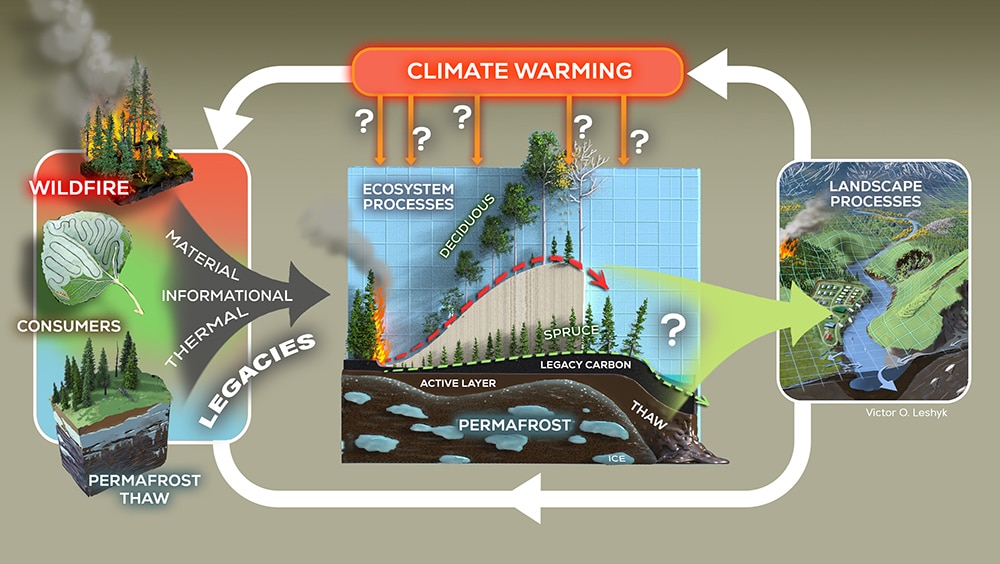Ecological memory stored in a landscape can help an ecosystem recover from disturbances like fire and outbreaks of disease. But what happens when climate warming disrupts that process? How long before ecological memories stored in the warming Arctic are overwritten by new ones, and what does that mean for the Arctic’s future?
A team of more than 40 scientists has been awarded $9.6 million by the National Science Foundation to investigate these and a web of connected questions in interior Alaska as part of the Bonanza Creek Long-Term Ecological Research Program (LTER). The project also is supported by the USDA Forest Service Pacific Northwest Research Station.
Michelle Mack, principal investigator and Regents’ professor of biology at the Center for Ecosystem Science and Society at Northern Arizona University, said the next stage of research will happen over a potentially transformative period for the Arctic’s boreal forests.
“We’ve seen how dramatic changes to fire and permafrost in the boreal forest caused by climate warming have already disrupted the way these ecosystems have stabilized themselves for millennia,” Mack said. “Over the next six years, we are going to observe how those legacies and disruptions are shaping the forest’s future and the future for communities who depend on the boreal forest.”
Mack’s team will be asking how human activity has shaped the forests’ history, working with Alaska Native tribes to develop research questions that are relevant to their communities and roles managing fire today. The program also will convene an Alaska Native Advisory Council to better include Native communities’ perspectives and research priorities.
Research over the next six years, which will be co-led by NAU investigators Ted Schuur, Xanthe Walker, Logan Berner, Scott Goetz and expert collaborators from nine academic institutions, the U.S. Forest Service and the U.S. Geological Survey, will build on decades of previous data collected through the Bonanza Creek LTER program since 1987. Bonanza Creek, based at the University of Alaska-Fairbanks Institute of Arctic Biology, is one of 28 LTER sites in the country.
The team will work at a network of sites across interior Alaska investigating interlinked topics, including how fire affects successional trajectories, how permafrost thaw is changing hydrology in the region, how soil microbes are responding to warming and how the aspen leaf miner insect and plant pathogens like aspen running canker could determine the future ability of aspen to thrive and reproduce in the region.
The team has found that increasingly frequent and intense fires in the boreal forest have resulted in faster-growing deciduous trees like paper birch and trembling aspen moving in where slower-growing but more flammable black spruce once dominated. Over the next six years, they will monitor a wider series of forest plots that have burned at different times, including some only reachable by helicopter, to construct a kind of time-lapse that illustrates how these forests are re-growing and changing, and what role fire plays.
“Our work at Bonanza Creek LTER has shown us how uncertain the future of the Arctic boreal forest is,” Mack said. “The next stage is for this really talented team to map out what kinds of futures are possible and probable, and how humans will play a role in shaping them.”
Kate Petersen | Center for Ecosystem Science and Society




